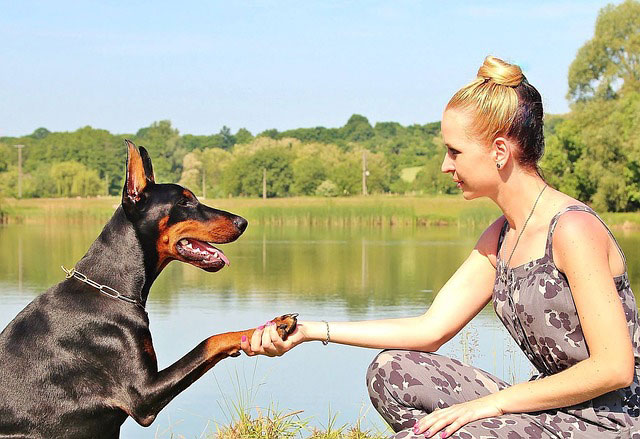What Is Shaping In Psychology?
Shaping is a conditioning technique that involves working toward a target behavior by breaking it down into gradual, successive steps and rewarding each step on the path toward the desired outcome. Psychologist B. F. Skinner introduced the concept as part of his operant conditioning theory. Shaping is a term used in behavioral psychology to establish…

Shaping is a conditioning technique that involves working toward a target behavior by breaking it down into gradual, successive steps and rewarding each step on the path toward the desired outcome.
Psychologist B. F. Skinner introduced the concept as part of his operant conditioning theory. Shaping is a term used in behavioral psychology to establish operant behavior through successive approximations toward the desired response. Closer and closer responses are reinforced until the desired response is achieved.
For example, when a person or an animal engages in a behavior similar to the behavior you are trying to teach, you would reward it, even though it’s not exactly right. As the behavior is repeated, you reward steps that bring them closer and closer to the final goal.
Shaping has many applications when it comes to learning. It can teach new behaviors, but it can also phase out unwanted responses, such as fear reactions that occur in phobias.
How Does Shaping Work?
So how exactly does this shaping process work in psychology? Shaping is based on behavioral principles, including Thordike’s law of effect and Skinner’s operant conditioning.
In both cases, using reinforcement and punishment can increase or decrease the chances of a behavior occurring again.
It can be helpful to look at how Skinner himself described the process. In 1953, he wrote:
“By reinforcing a series of successive approximations, we bring a rare response to a very high probability in a short time. … The total act of turning toward the spot from any point in the box, walking toward it, raising the head, and striking the spot may seem to be a functionally coherent unit of behavior; but it is constructed by a continual process of differential reinforcement from undifferentiated behavior, just as the sculptor shapes his figure from a lump of clay.”
Shaping can be a powerful tool when teaching a new behavior. As the learner exhibits behaviors that are increasingly close to the desired behavior, the teacher progressively reinforces each successfully closer approximation.
Initially, this might involve reinforcing any behavior that comes even remotely close to the desired response. The learner’s behavior becomes closer and closer to the desired outcome until the correct response is achieved and then further reinforced.
The Shaping Process
Imagine, for example, that you want to utilize shaping to teach your dog how to fetch a stick.
- You might begin by rewarding your dog if he even walks near the stick.
- Next, you might reward him if he picks the stick up in his mouth.
- The next successive approximations might be walking to you with the stick in his mouth, giving you the stick, watching you throw the stick, walking toward the stick, picking up the stick, and eventually chasing after the stick when you throw it.
- By rewarding each step, you are able to shape the behavior toward the desired outcome.
Choosing the Right Reinforcement Schedule When Shaping Behavior
During the initial stages of shaping, a continuous reinforcement schedule might be used to ensure that the desired response is acquired. This would mean that every single time a behavior occurs, it would be reinforced.
Once the desired response has been established, the individual might switch to a partial reinforcement schedule. This would mean giving a reward only periodically or intermittently.
When to Use Shaping to Teach Behavior
So when might someone choose to utilize shaping to teach a behavior? It can be particularly useful in situations where a person or animal does not produce the desired response on their own.
Teaching a rat to press a lever inside a Skinner box is a good example. When placed in a training box, the rat will probably not press the lever. To get the rat to engage in the desired action, the experimenter might begin by giving the animal food pellets whenever it walks near the lever.
Once that action becomes more frequent, the experimenter might require the animal to get closer to the lever before providing reinforcement. Eventually, the rat will actually have to touch the pellet to obtain the food. At some point, the rat might accidentally press the lever, which will lead to the release of food.
Now that the desired response has been achieved, the experimenter can present the reinforcement when the animal actually presses the lever on purpose and vary the rate of reinforcement to determine the rate of response.
Examples of Shaping in Psychology
To understand how shaping works in psychology, it can be helpful to look at a few examples:
Increasing Workplace Productivity
An employer might offer rewards, such as bonuses or positive feedback, when workers reach certain productivity milestones. A pay structure that increases for hitting certain performance markers, such as making a set number of sales, is an example of how shaping might be used to modify behavior.
Teaching Positive Habits
If you were teaching a child to keep their room clean, you might start by rewarding small behaviors such as picking up a toy or making their bed. You’d then offer rewards for closer approximations toward the final goal.
Creating an Exercise Habit
If you are trying to exercise regularly, you might utilize shaping to make it easier to meet your goals. For example, you might be rewarded for starting with a small goal, like working out for 10 minutes daily. Then, as you progressively increase your goal, you might gain greater rewards for working out longer or sticking with it for longer periods.
Training a Dog
If you are trying to teach a dog to wait by the door before going on a walk, you will reward them for each progressive step that gets them closer to the goal. For example, you might start by rewarding them for going near the door, then for sitting by the door, and then for sitting quietly until you attach their leash.
Treating a Phobia
Shaping can also be used as part of exposure therapy to reduce fear responses in phobias. For example, a person might be reinforced if they can tolerate thinking about the source of their fear. Next, they might look at a picture of what they fear. Next, they would sit in the same room with the object or even try getting closer to what they fear.
How Effective Is Shaping?
Shaping can be an effective way of helping encourage desirable behaviors and discouraging maladaptive ones. However, it is a learning process that often requires longer periods of time and more work than other conditioning methods.
On the plus side, shaping helps provide guidance and feedback about progress. When people are able to make successful progress toward the desired behavior, they recieve positive feedback in the form of reinforcement.
If shaping is not working, it can also be adapted to suit the needs of the individual and their current abilities.
Shaping that relies on positive reinformcent to modify behavior is often more effective than other methods that utilize punishment.
Establishing the initial response can sometimes be challenging. Rewarding the correct behaviors and delivering the reward quickly is essential. If the timing is off, you risk building an association with the wrong behavior.
However, shaping can be a valuable tool, particularly if you are trying to condition a complex behavior that might require a series of successive steps to learn.
How to Use Shaping
Shaping can be an essential tool used by clinicians, teachers, and parents. According to Martin and Pear (1999), there are four key considerations that need to be made when using shaping:
Establish a Clear Target
It is essential to specify the final behavior. By having a specific behavioral target, the “trainer” will be better able to apply reinforcement consistently.
Choose a Starting Point
Select a starting behavior. The trainer must choose a starting behavior that is likely to occur to receive reinforcement.
Establish Shaping Steps
Before shaping begins, the trainer should spend some time considering the likely behaviors that may occur between the starting behavior and the target behavior.
The trainer will be more likely to deliver consistent reinforcement by deciding which approximations should be reinforced.
Move at the Correct Pace
If the individual fails to show progress, try simpler steps. If progress is moving too rapidly, try raising the criteria for reinforcement.
Avoid Satiation and Overjustification
Rewards should be chosen and utilized carefully. If a person becomes satiated, then the reward will no longer be reinforcing, which can disrupt the shaping process. For example, if you are using treats to shape behavior, but the learner is full or no longer likes the treat, it will not be effective.
Overjustification can also be a problem if you are trying to use shaping to teach a behavior that the individual is already intrinsically motivated to learn. In such cases, extrinsic rewards can actually undermine the motivation to engage in the behavior.
Key Points to Remember
- Shaping is a technique used in operant conditioning to reward successive approximations toward a desired behavior.
- Shaping utilizes reinforcement, which involves rewarding steps toward a desired behavior until the goal behavior is achieved.
- Shaping can be an effective way to teach complex or novel behaviors, particularly when the individual does not yet possess these behaviors.
- In order to shape a behavior effectively, it is important to carefully plan out the steps, rewards, and reinforcement schedule.
Sources:
Berardi, V., Carretero-González, R., Klepeis, N. E., Ghanipoor Machiani, S., Jahangiri, A., Bellettiere, J., & Hovell, M. (2018). Computational model for behavior shaping as an adaptive health intervention strategy. Translational Behavioral Medicine, 8(2), 183–194. https://doi.org/10.1093/tbm/ibx049
DeLamater J, Myers D. Social psychology. Belmont, CA: Wadsworth Cengage Learning; 2011.
Franzoi SL. Psychology: A discovery experience. Mason, OH: South-Western Cengage Learning; 2011.
Hatfield DB, Wallace DC. Successive approximation (shaping). In The Concise Corsini Encyclopedia of Psychology and Behavioral Science. (W. E. Craighead & C. B. Nemeroff, Eds.). Hoboken, NJ: John Wiley & Sons; 2004.
Martin G, Pear J. Behavior modification: What it is and how to do it (6th ed.). Englewood Cliffs, NJ: Prentice Hall; 1999.
Scott, H. K., Jain, A., & Cogburn, M. (2024). Behavior modification. In StatPearls. StatPearls Publishing. http://www.ncbi.nlm.nih.gov/books/NBK459285/
Skinner BF. Science and human behavior. pp. 92–3. Oxford, England: Macmillan; 1953.
Weiten W. Psychology: Themes and variations. Belmont, CA: Wadsworth; 2010.





